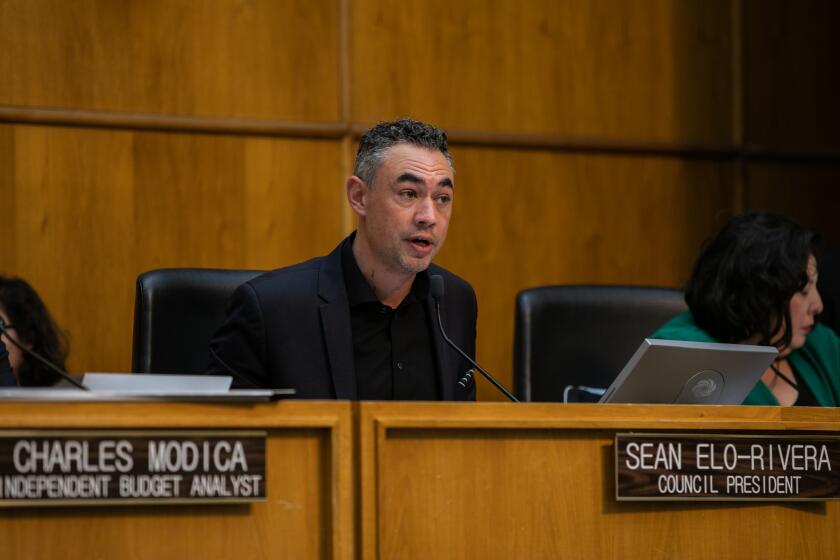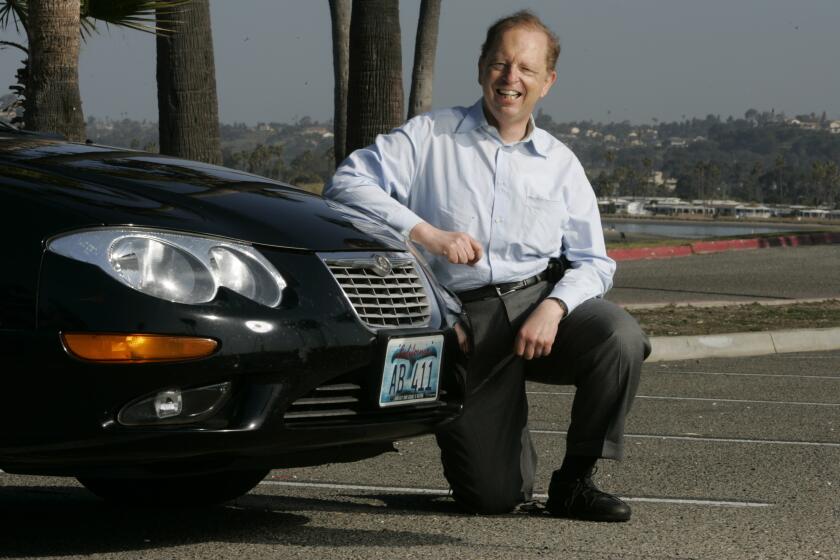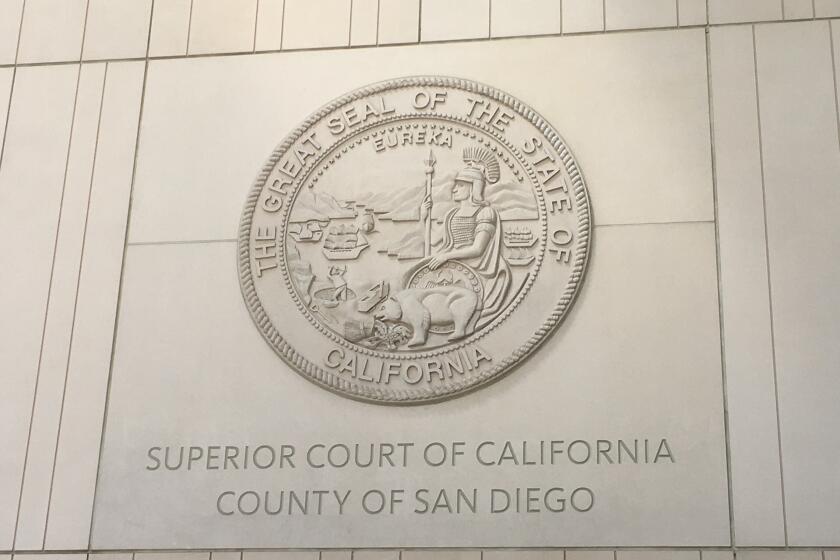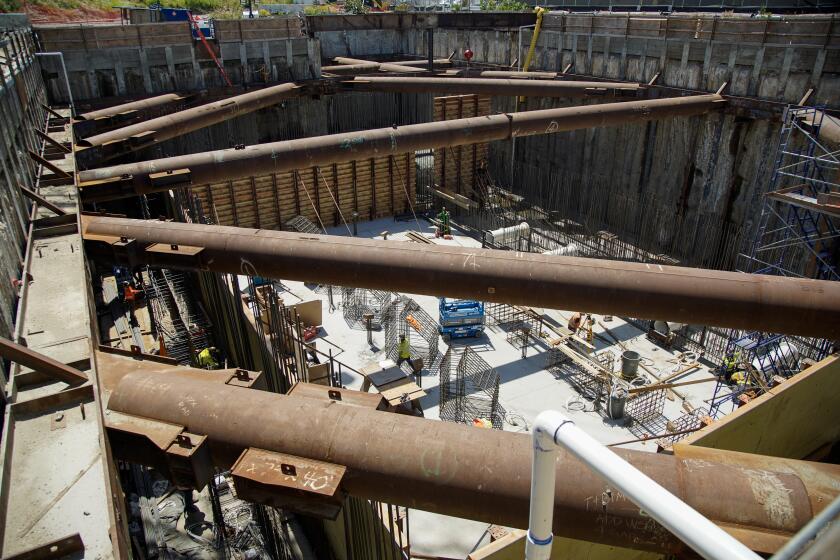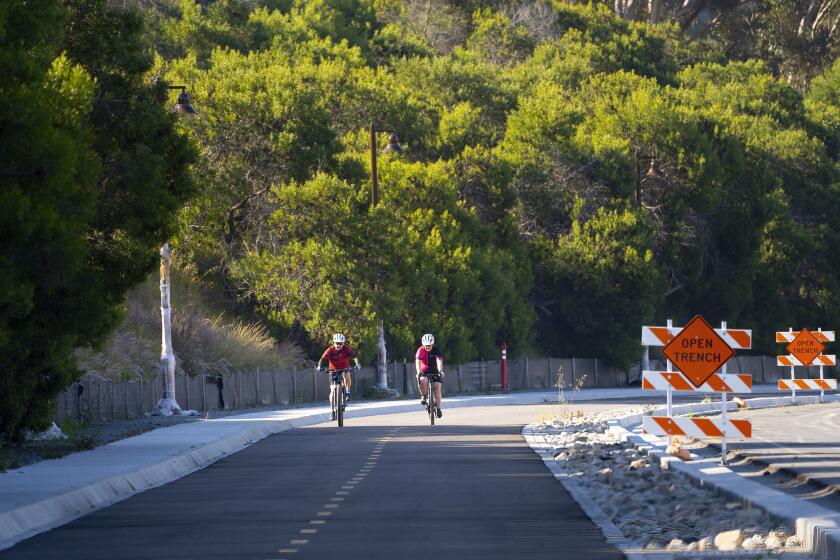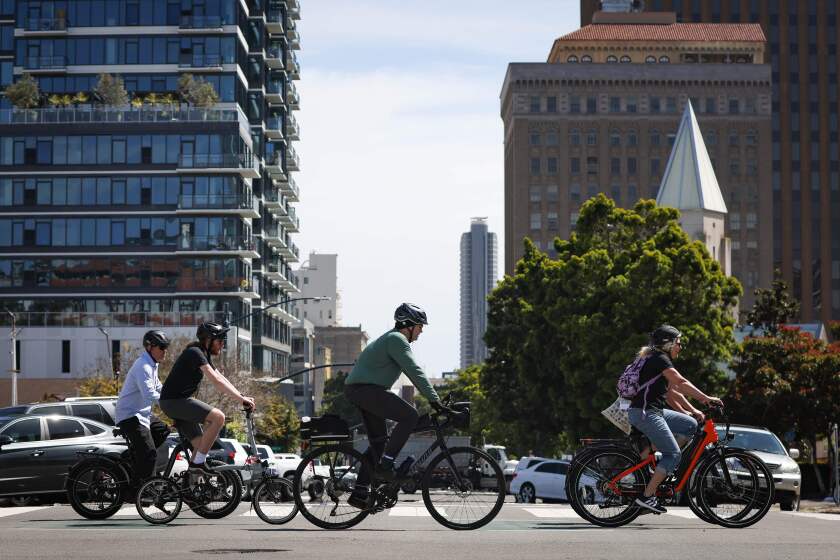San Diego takes aim at Chargers’ Carson plan
City Attorney Goldsmith raises legal questions, environmental concerns
With the Chargers refusing to negotiate a stadium deal in San Diego this summer, the city has begun portraying the team's Carson stadium effort as risky and vulnerable to lawsuits while declaring a competing stadium proposal in Inglewood a superior project.
The strategy, which City Attorney Jan Goldsmith has spearheaded with several recent radio and TV interviews, aims to convince NFL owners before their Oct. 6 meeting that the Chargers should remain in San Diego because the city has a more viable stadium proposal than the Carson project.
Praise for the Inglewood stadium proposed by St. Louis Rams owner Stan Kroenke is the strategy’s second leg, because if the owners choose Inglewood over Carson then the Chargers likely couldn’t move to Los Angeles without brokering a deal to share Kroenke’s stadium.
Related: Life after move for Chargers fans?
“We’re trying to affect the decision of 24 out of 32 billionaires who get to make the decision,” said Goldsmith, referring to a league policy that at least three-quarters of the owners approve proposed franchise relocations.
Goldsmith said the same goal of persuading NFL owners is what’s been motivating Chargers spokesman Mark Fabiani to repeatedly criticize San Diego’s efforts to build a new stadium, particularly the city’s expedited environmental impact report released Aug. 10.
Goldsmith said he’s decided to counter Fabiani’s contentions that the city’s EIR is ripe for legal challenges by pointing out that the Carson project, a joint venture between the Chargers and Oakland Raiders, is vulnerable to litigation.
That vulnerability is based on Carson’s use of a citizens initiative to avoid completing an EIR, and whether the initiative might not have been launched by citizens but by Carson city officials or the Chargers instead.
Goldsmith, who is on vacation and was unavailable for an interview, made his comments in recent appearances on KUSI TV, 1090 AM in San Diego and 980 AM in Los Angeles.
In those interviews, Goldsmith said employing an initiative to avoid an EIR is legally risky because it’s based on relatively new law created last summer by a state Supreme Court ruling,
“There is risk there because it’s new, it’s untried,” he said. “We’re not planning to sue anybody – we’re not saying it’s illegal. We’re just saying there’s all these risks in these big projects when you follow these laws.”
Goldsmith, however, said litigation is something his office has researched.
“At some point we’re going to look at different options and different alternatives as lawyers are supposed to do,” he said, adding that he’s already advised Mayor Kevin Faulconer on the city’s legal options. “I will tell you the mayor is not interested in filing or threatening lawsuits at this point.”
Faulconer says he’d prefer to negotiate a stadium deal with the Chargers by a Sept. 11 deadline required for a January public vote, but the team’s unwillingness to meet since the city unveiled its financing proposal on Aug. 10 has made meeting that deadline unlikely.
Fabiani declined to comment on the Carson project’s potential legal vulnerabilities.
Carson City Attorney Sunny Soltani said she’s highly confident her city is on firm legal ground with the initiative that allowed them to bypass an EIR, a strategy that was also employed on the Inglewood stadium.
“I think the Supreme Court decision is unequivocal on this issue,” she said.
Cory Briggs, a local environmental attorney who has been critical of San Diego’s stadium proposal, agreed.
“The legal upshot is the Supreme Court has said a voter-approved initiative is exempt from CEQA — period,” said Briggs, referring to the California Environmental Quality Act.
Goldsmith said he doesn’t see the issue as fully settled.
“Whether the courts really believe that it’s a fait accompli — you have no environmental review — that’s to be seen,” he said.
The Carson project also faces other hurdles, such as obtaining permits and approval from other agencies, possibly including Caltrans.
“The initiative doesn’t let them bypass obtaining all the necessary permits any development would have to get,” said Soltani, who predicted those efforts would be routine. “They have to obtain their usual permits like building permits and fire safety permits.”
Goldsmith said another vulnerability is that the Carson initiative may have originated with the Chargers and Raiders or city officials, instead of citizens.
“Was that really a citizens initiative or was that, you know, some conspiracy between the city and Chargers?” Goldmsith. “They can’t do that. They can’t have the city be a partner in a citizens initiative.”
Goldsmith knows firsthand that initiatives can be challenged on such grounds.
In 2013, the state’s Public Employment Relations Board ordered San Diego to rescind the voter-approved 2012 Proposition B pension reform measure based on labor union contentions that the citizens gathering signatures for the initiative did so under the guidance of Mayor Jerry Sanders.
That legal challenge, which could overturn Proposition B, is still in the courts.
Soltani declined to comment.
Goldsmith has also hailed the Inglewood proposal as far superior to Carson, calling it a “first-class palace” that could host events of worldwide significance.
In addition to the stadium, the project includes shops, offices, a hotel, condos and a 6,000-seat performance venue.
“Inglewood clearly is a much broader, bigger project that would make a statement for the NFL,” he said.
Those sentiments were echoed after the Aug. 11 NFL owners meeting outside Chicago, where NFL Network reporter Steve Wyche said Inglewood had the edge over Carson after owners saw presentations on both.
“I think everyone kind of is reading the tea leaves that the Inglewood project is absolutely the leader in the clubhouse,” he said.
Goldsmith said one reason is that the Inglewood stadium is proposed for the former Hollywood Park racetrack while the Carson stadium is proposed for a former dump.
“Kroenke isn’t building on a waste dump,” Goldsmith said. “Do you know what their solution is: Put a cap on it, cover it with soil, call it a day and invite 70,000 people over to watch a game and have some hot dogs.”
The California Department of Toxic Substances Control is overseeing remediation of the former dump and has given the 168-acre site clearance once that work is complete. The agency has also endorsed it as a site for a stadium.
Goldsmith has criticized the Carson initiative’s 19-page stadium environmental analysis, comparing it to the 6,000-page draft EIR San Diego recently completed.
Soltani said the Carson environmental analysis, which requires several new turning lanes on nearby streets and upgrades to the 110 freeway to avoid traffic congestion, was thorough.
“The city’s position is this initiative was comprehensive,” she said. “It looked at the environmental issues and it did provide for mitigation measures.”
She also noted that a full EIR was done on the site in 2006 for a mixed-use project that would have included more than 1,500 homes.
“The courts approved and signed off on that,” she said.
The NFL meetings in October will include discussion of which franchises might move to Los Angeles and when. But league officials have said no votes are scheduled to take place at the meeting, which is slated for Oct. 6 and 7 in New York City.

